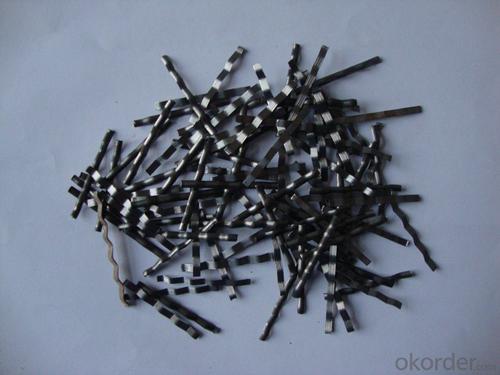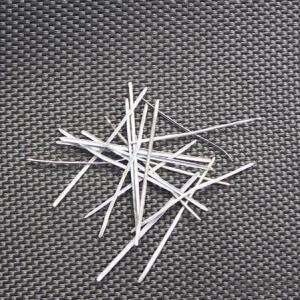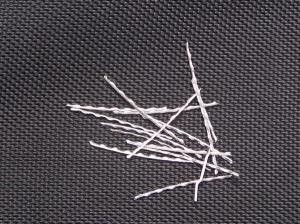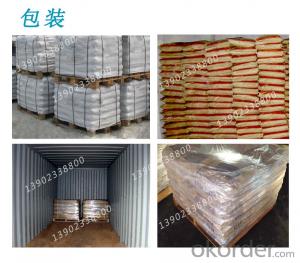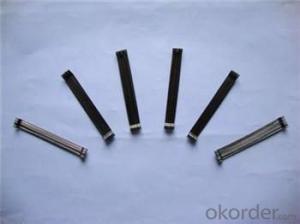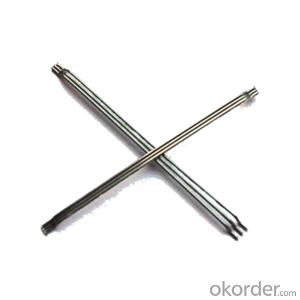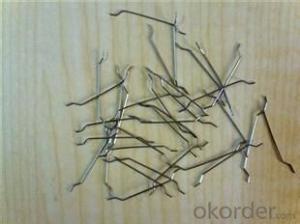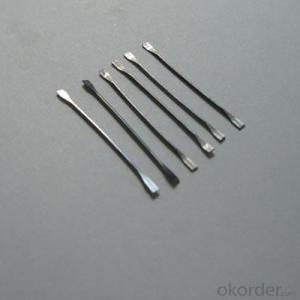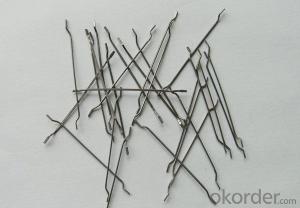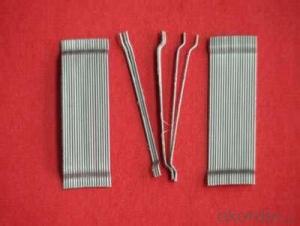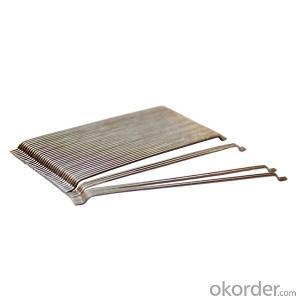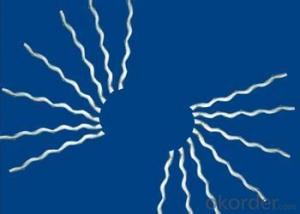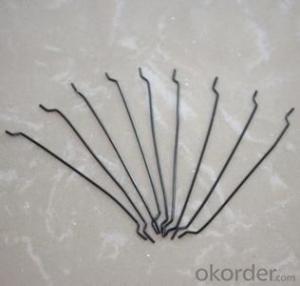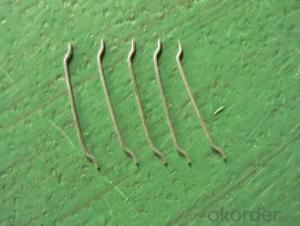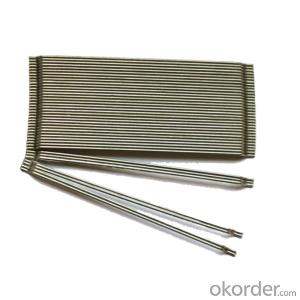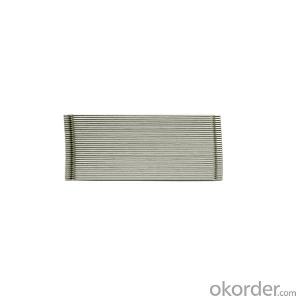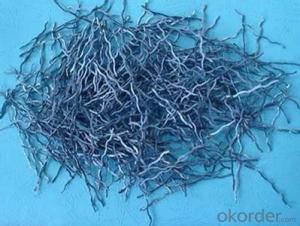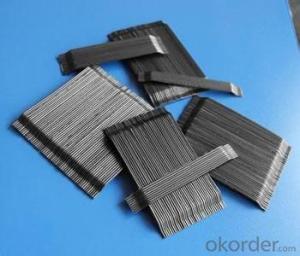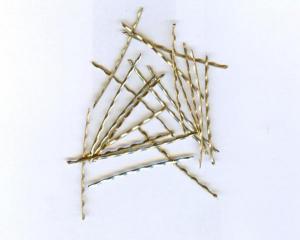Melt Extract Stainless Steel Fiber Glued for Construction CNBM International China
- Loading Port:
- Tianjin
- Payment Terms:
- TT OR LC
- Min Order Qty:
- 1000 kg
- Supply Capability:
- 250000 kg/month
OKorder Service Pledge
OKorder Financial Service
You Might Also Like
Quick Details
Place of Origin: Shandong, China (Mainland), Shandong, China (Mainland)
Model Number: GLUED, glued steel fiber
Material: Steel
type: steel fiber for concrete reinforcement
material: steel wire
shape: glued together in a row
appearance: clear and bright
Product features
glued steel fiber together in a row ,is used with cement for construction
oncrete steel fiber is specifically to enhance concrete in its hardened state ,the uniform distribution of steel fiber throughout the concrete greatly improve concrete bonding and tensile strength ,additionally it provides exceptional load stability and durability ,as reliable and efficient concrete reinforcement material
it is widely ued in buildings ,bridges ,thin roo engineering ,highway etc.
Specifications
length :20-60mm
diameter :0.5MM-1.2MM
tensile strengh:>1100Mpa
| diameter | length | tensile strength | |
| 0.5mm | 35mm | 1100Mpa | |
| 0.75 | 60mm | 1100Mpa | |
| 0.9 | 60m | 1100Mpa |
Picture

glued steel fiber together in a row ,is used with cement for construction
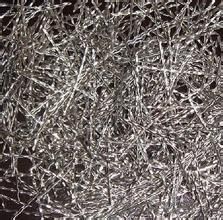
FAQ
we can produce any type steel fiber and of course we can make production according to your requirement
we have specilize in this field for almost 10 years ,with good quality and competitive price
- Q: Can melt extract stainless steel fiber be used in high-strength lightweight concrete mixtures?
- Indeed, high-strength lightweight concrete mixtures can benefit from the utilization of melt extract stainless steel fiber. By incorporating these fibers into the concrete, its mechanical characteristics, such as tensile strength, flexural strength, and impact resistance, can be significantly improved. Moreover, these fibers can substitute conventional reinforcement techniques like steel bars or mesh, ultimately reducing the concrete's weight without compromising its structural soundness. Furthermore, the corrosion resistance provided by stainless steel fibers guarantees the durability and longevity of the concrete mixture. Thus, melt extract stainless steel fiber emerges as a fitting option for high-strength lightweight concrete mixtures.
- Q: What is the effect of melt extract stainless steel fiber on the modulus of creep of concrete?
- Including melt extract stainless steel fibers in concrete has a favorable impact on the material's creep modulus. Stainless steel fibers are renowned for their excellent tensile strength, resistance to corrosion, and durability. When integrated into concrete, these fibers serve as reinforcement, thereby enhancing its mechanical characteristics. The creep modulus denotes the material's capacity to withstand deformation over a prolonged period under a consistent load. By incorporating stainless steel fibers, the concrete's resistance to creep is enhanced as the fibers aid in load distribution and reduction of internal stresses within the material. Consequently, the rate of creep diminishes and the creep modulus increases. Furthermore, the presence of melt extract stainless steel fibers also enhances the concrete's overall ductility. This implies that the material can endure greater deformation before experiencing failure, leading to improved structural stability and performance. This is particularly advantageous in situations where the concrete is subjected to sustained loads or temperature fluctuations, as it mitigates the risk of long-term deformation and potential structural failure. In conclusion, the inclusion of melt extract stainless steel fibers has a positive effect on the concrete's creep modulus. Their addition improves the material's resistance to deformation over time, enhances its mechanical properties, and augments its overall durability.
- Q: What is the effect of melt extract stainless steel fiber on the modulus of porosity of concrete?
- The effect of melt extract stainless steel fiber on the modulus of porosity of concrete is that it helps to reduce the porosity and increase the structural integrity of the concrete. The fibers act as reinforcement, filling in the gaps and voids in the concrete matrix, thereby reducing the overall porosity. This leads to a higher modulus of porosity, which means that the concrete becomes more resistant to cracking and deterioration.
- Q: Can melt extract stainless steel fiber replace traditional reinforcement methods in concrete?
- Melt extract stainless steel fiber has the potential to replace traditional reinforcement methods in concrete. These fibers, made from high-quality stainless steel, offer excellent resistance to corrosion and high tensile strength. By improving the mechanical properties of concrete, enhancing durability, and increasing resistance to cracking and impact, these fibers provide numerous advantages compared to traditional methods. One advantage of stainless steel fibers is their ease of handling and installation. They can be easily added to the concrete mix during batching, eliminating the need for labor-intensive installation of steel bars or wire mesh. This saves time and effort. Furthermore, stainless steel fibers eliminate the risk of corrosion, a common problem with traditional reinforcement methods. Corrosion can significantly reduce the lifespan and strength of concrete structures. In contrast, stainless steel fibers are highly resistant to corrosion, ensuring the longevity and durability of the concrete. Additionally, melt extract stainless steel fibers improve the overall performance of concrete. They enhance flexural and tensile strength, making the material more resistant to cracking and deformation. This is particularly useful in applications where concrete is subjected to heavy loads or dynamic forces, such as industrial flooring, bridge decks, or airport runways. In conclusion, melt extract stainless steel fiber presents a viable alternative to traditional reinforcement methods in concrete. Its corrosion resistance, high tensile strength, and ease of installation make it an attractive option for improving the performance and durability of concrete structures. However, careful consideration of the specific application and design requirements is necessary before deciding on the suitability of using stainless steel fibers as a replacement for traditional reinforcement methods.
- Q: How does melt extract stainless steel fiber improve the resistance to sulfate attack in concrete?
- Melt extract stainless steel fiber improves the resistance to sulfate attack in concrete through various mechanisms. Firstly, the addition of stainless steel fibers in the concrete mix enhances the overall durability and longevity of the concrete structure, making it less susceptible to sulfate attack. Sulfate attack occurs when sulfate ions from sources such as groundwater, soil, or industrial waste react with the components of concrete, leading to the formation of expansive compounds that can cause cracking and deterioration of the concrete. The stainless steel fibers, being highly corrosion-resistant, act as a physical barrier against the ingress of sulfate ions into the concrete matrix. They create a network throughout the concrete, providing additional reinforcement and preventing the expansion and cracking caused by sulfate attack. Furthermore, the high tensile strength and flexibility of stainless steel fibers improve the overall mechanical properties of the concrete, making it more resistant to the deleterious effects of sulfate attack. The fibers help to distribute stresses more evenly within the concrete, reducing the potential for cracking and damage. Moreover, the presence of stainless steel fibers can also enhance the resistance of concrete to chemical attack. The stainless steel fibers have a high resistance to corrosion, even in harsh environments, which helps to protect the concrete from the corrosive effects of sulfate ions. In summary, melt extract stainless steel fiber improves the resistance to sulfate attack in concrete by acting as a physical barrier, enhancing the mechanical properties, and providing corrosion resistance. These combined effects result in a more durable and long-lasting concrete structure that can withstand the damaging effects of sulfate attack.
- Q: How much is the steel fiber bridge diversion dam using the model and specifications?
- Is not less than 24 millimeters
- Q: How does the addition of melt extract stainless steel fiber affect the ductility of concrete?
- The addition of melt extract stainless steel fiber generally improves the ductility of concrete. Stainless steel fibers act as reinforcements within the concrete matrix, enhancing its ability to withstand tensile stresses. This results in a higher ductility, allowing the concrete to undergo more deformation before failure.
- Q: How does melt extract stainless steel fiber improve the resistance to spalling in concrete?
- Melt extract stainless steel fiber improves the resistance to spalling in concrete by reinforcing the material and enhancing its overall durability. When added to the concrete mix, the stainless steel fibers disperse uniformly, forming a three-dimensional network throughout the structure. This network acts as a reinforcement, increasing the tensile strength and crack resistance of the concrete. Spalling in concrete occurs when the surface of the material begins to chip, flake, or peel off due to various factors such as freeze-thaw cycles, high temperatures, or chemical exposure. The addition of melt extract stainless steel fibers helps to mitigate these effects by preventing the propagation of cracks and reducing the expansion and contraction of the concrete. The high tensile strength of stainless steel fibers allows them to absorb and distribute stress throughout the concrete, preventing the formation of cracks and minimizing the impact of external forces. Moreover, the corrosion-resistant properties of stainless steel ensure that the fibers remain intact and do not deteriorate over time, ensuring long-term reinforcement. Additionally, the three-dimensional network created by the stainless steel fibers helps to bridge the cracks that may occur in the concrete. This bridging effect prevents the cracks from widening and propagating, thereby reducing the likelihood of spalling. In summary, melt extract stainless steel fiber improves the resistance to spalling in concrete by reinforcing the material, increasing its tensile strength, reducing crack propagation, and enhancing its overall durability. By adding these fibers to the concrete mix, the risk of spalling due to factors such as freeze-thaw cycles, high temperatures, or chemical exposure is significantly minimized, resulting in a more resilient and long-lasting concrete structure.
- Q: Can melt extract stainless steel fiber be used in tunnel shotcreting applications?
- Yes, melt extract stainless steel fiber can be used in tunnel shotcreting applications. Its high tensile strength and resistance to corrosion make it suitable for reinforcing tunnel shotcrete, providing improved durability and structural integrity. Additionally, the fibers enhance the impact and abrasion resistance of the shotcrete, making it an ideal choice for tunneling projects.
- Q: What is the effect of melt extract stainless steel fiber on the modulus of brittleness of concrete?
- The effect of melt extract stainless steel fiber on the modulus of brittleness of concrete is that it increases the ductility and flexural strength of concrete, thereby reducing its brittleness. The addition of stainless steel fibers improves the crack resistance and enhances the overall performance of concrete by preventing the propagation of cracks and increasing its ability to withstand external forces and impacts.
Send your message to us
Melt Extract Stainless Steel Fiber Glued for Construction CNBM International China
- Loading Port:
- Tianjin
- Payment Terms:
- TT OR LC
- Min Order Qty:
- 1000 kg
- Supply Capability:
- 250000 kg/month
OKorder Service Pledge
OKorder Financial Service
Similar products
Hot products
Hot Searches
Related keywords



